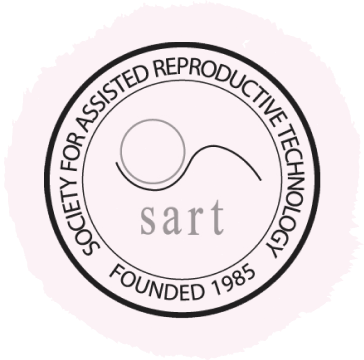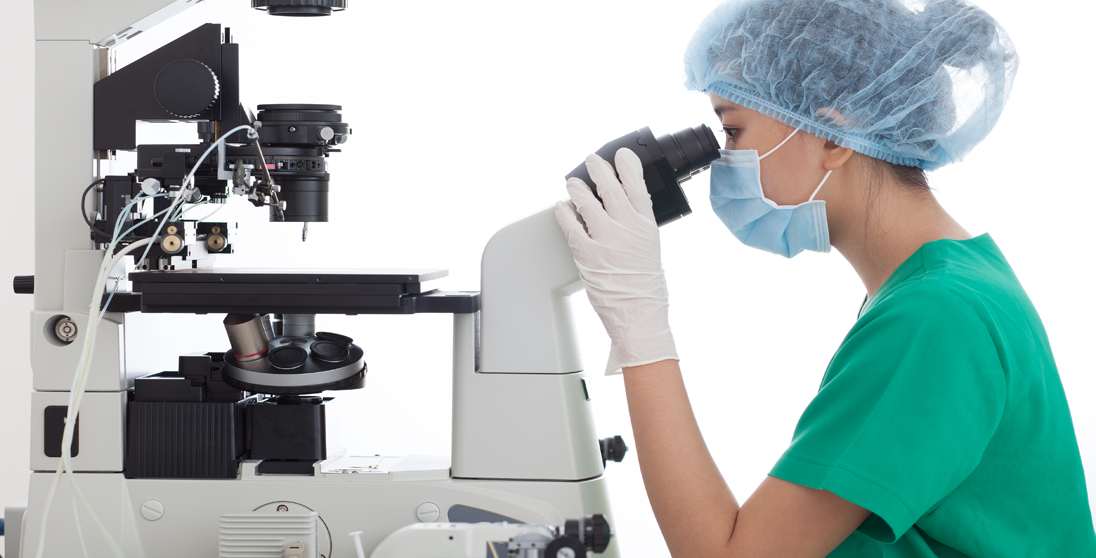


Family Planning with Focus — Gender Selection IVF
If you’re considering gender selection as part of your fertility journey, Bay IVF offers experienced, ethical support — blending advanced science with personalized care for Bay Area families.


Gender Selection determines the gender of embryos with practically 100% accuracy.
Preimplantation Genetic Testing (PGT) is used for gender selection and family balancing.



We were one of the first fertility clinics in the San Francisco Bay Area to offer Gender Selection IVF.
What Is Gender Selection IVF?

We were one of the first fertility clinics in the San Francisco Bay Area to offer Gender Selection IVF.
Gender selection via IVF is a specialized treatment pathway that uses In Vitro Fertilization, combined with embryo testing, to determine the biological sex of resulting embryos.
With this option, you and your partner can decide whether to transfer a male (XY) or female (XX) embryo before their transfer into the uterus.
At Bay IVF, we provide full transparency about this process, so you understand what’s involved, why it may add time or cost, and how it aligns with your family-building goals.




Download a Gender Selection Patient Guide (PDF)
“Understanding Gender Selection IVF
Questions to Ask & What to Expect“

Who Is This For?

You might consider gender selection IVF if you:
- Want to add a daughter or son to balance an existing family.
- Want to avoid a known sex-linked genetic disorder (e.g., X-linked conditions) and want both embryo sex and genetic normalcy checked.
- You are already planning an IVF cycle and wish to include gender selection rather than a separate procedure.
- During your consultation, we’ll review your goals, your current fertility profile, and whether Gender Selection is a viable option for you. Your comfort and informed choice always come first.
How It Works at Bay IVF

IVF to create embryos
In Vitro Fertilization procedure creates as many high-quality embryos as possible.

Extended embryo culture to blastocyst
By the fifth to seventh day after the egg retrieval, the embryos should reach the blastocyst stage (80 or more cells).

Blastocyst trophectoderm biopsy
An embryo biopsy is performed by creating an opening in the eggshell around the embryo. It is possible to safely remove a few future placenta cells using micromanipulators.

Embryo Freezing
The blastocysts are cryopreserved immediately after the biopsy and stored in liquid nitrogen in our IVF laboratory.

Genetic analysis of the embryonic tissue
The genetic analysis will screen for many of the most common genetic conditions and determine the gender of each embryo.

Liquid nitrogen storage of the embryos
Frozen embryos can be stored for extended periods, but most patients start their Frozen Embryo Transfer cycle right away.

Subsequent Frozen Embryo Transfer
When you decide to conceive with your cryopreserved embryos, one or two genetically “healthy” embryos of the desired gender will be thawed and transferred into your uterus (Frozen Embryo Transfer).

Accuracy, Costs & Considerations

- Accuracy: Gender Selection using PGT can identify cell-sex chromosomes with almost absolute accuracy.
- Costs & Timing: Because the process involves embryo biopsy and genetic testing, additional labs and costs apply beyond standard IVF. We’ll review your specific estimate at your consult.
- Key Considerations:
- You’ll need enough viable embryos to enable the selection of a specific sex, which may affect your timeline and choice.
- The highest priority remains embryo health and successful pregnancy — we’ll always advise you with your best outcome in mind.
- Ethical and personal reflections: Gender Selection is a meaningful choice and not simply a “preference” option. We’ll support you in making the decision that aligns with your values.

Why Choose Bay IVF for Gender Selection

- You’ll work directly with Dr. Polansky and our compact, dedicated team — no rotating doctors, no large bureaucracy.
- Our lab and embryology protocols emphasize quality over quantity, so you get fewer, better-targeted visits and as much comfort as possible.
- We offer full transparency on costs, timelines, risks, and logistics—we believe informed patients make empowered decisions.
- Our Bay Area location gives you local access — even if you’re travelling, we’ll plan your cycle to optimize convenience.



Bay IVF Success
At Bay IVF, over 60% of IVF cycles for patients under 35 lead to a live birth.
(Based on the 2024 SART data.)

Ready to Explore Your Options?
Your journey starts with a conversation. We’re here to support you every step of the way.

- Call or text us at 📞 650 322 0500 to schedule your consultation with Dr. Polansky.
- During the visit, you will:
- Discuss your family goals and motivations for Gender Selection.
- Review your fertility profile and determine if you’re a good candidate.
- Receive a tailored roadmap with a timeline, steps, costs, and next actions.
- There’s no obligation — just honest answers and support to help you decide.

Bay IVF Early Pregnancy Heartbeat



Treatment Prerequisites
Only a few treatment prerequisites are required before your treatment begins. They assess the egg and sperm quality and ensure that embryos can be accurately placed in a healthy uterus.
Female partner’s age
The probability of a successful IVF treatment declines sharply after age 44. You must be 43 and 11 months or younger at the time your IVF treatment begins. Patients who are 44 and older should strongly consider Donor Egg IVF as the most effective treatment option to achieve a successful pregnancy.
Female partner’s weight
Your BMI must be no greater than 31 for an adequate ovarian response and safety during the egg retrieval procedure. If your BMI is higher, please follow the IVF Diet and Lifestyle (PDF) recommendations as closely as possible. By doing so, you can achieve weight loss at an optimal rate, which could significantly improve your chances of a successful pregnancy.
Pathogen testing
This testing is required by the State of California. You and your partner (if applicable) must be tested for Hepatitis B-Surface Antigen, Hepatitis C-Antibody, HIV I&II, HTLV I&II (male partner only), and RPR.
Ovarian Reserve Assay (ORA)
ORA assesses the likelihood of producing normal-quality eggs. It involves measuring Follicle Stimulating Hormone (FSH), estradiol (estrogen, E2), and Anti-Mullerian Hormone (AMH) levels in blood.
These test results are used to optimize ovarian stimulation.
Antral Follicle Count
The number of antral follicles (small fluid-filled sacs within the ovaries seen on ultrasound) in unstimulated ovaries is related to the quality of the eggs. Ideally, there should be approximately 20 antral follicles in both ovaries combined.
Uterine measurement and saline ultrasound
It is important to determine the length of the uterus to ensure proper embryo placement.
Saline ultrasound is used to rule out intrauterine polyps or fibroids.
Semen evaluation
The male partner’s semen will be evaluated at Bay IVF to determine the best laboratory method for semen preparation for egg insemination.
Parents’ genetic testing (optional)
All prospective parents should consider genetic screening for hundreds of the most common genetic diseases. Please inform us during your initial appointment at Bay IVF if you would like to have your blood sample sent for genetic screening.
IVF diet and lifestyle
Environmental factors significantly impact reproductive health. Please review the IVF Diet and Lifestyle document (PDF) for a comprehensive list of environmental reproductive health recommendations and a source for dietary supplements.



Let’s Begin This Journey Together
Your first conversation is free — no pressure, just real answers from people who care.
Call us today to speak directly with our team and take your first step toward growing your family.
Meet Your Doctor

- Dr. Polansky received his medical diploma from Charles University in Prague, the Czech Republic, in 1978.
- After completing his OB/GYN residency at Jewish Hospital in Saint Louis, MO, he graduated from the Reproductive Endocrinology and Infertility (REI) fellowship at Stanford University in 1985.
- In the same year, he co-founded the Stanford IVF Clinic.
- Dr. Polansky obtained board certification in Obstetrics and Gynecology in 1986 and became REI subspecialty board certified in 1988.
- In 1987, he left Stanford University and established Nova IVF.
- In 2011, he founded Bay IVF, where he provides advanced fertility treatments with a holistic approach, utilizing state-of-the-art techniques.
- Dr. Polansky personally performs ultrasound examinations, egg retrievals, embryo transfers, and ovarian and endometrial stimulations for his patients.
- He is deeply committed to his patients and is always ready to lend a helping hand.
Frank Polansky, M.D.



Initial Appointment Questions
When you call to schedule your consultation, one of our Front Office Coordinators will ask you a short series of simple questions regarding your reproductive history. You will also have an opportunity to ask any financial questions.
Your Initial Visit at Bay IVF
A new patient appointment at a fertility clinic can be stressful. Our goal is to make your initial visit as friendly and relaxing as possible. We encourage you to ask questions at every step of the process to make you feel comfortable and informed.

When You Arrive
You will be welcomed by one of the clinic’s receptionists. One of our nurses will measure your height and weight and take your blood pressure.

Meet Your Doctor
Dr. Polansky will ask you a series of clarifying questions and then provide you with a summary of the factors contributing to your infertility.

Ask Your Questions
You will then have a discussion with him about the most suitable reproductive treatment(s) for you. During this time, you will have the opportunity to ask any questions you may have.

Exam Room
One of the nurses will escort you to an examination room. Your examination will begin with listening to your lungs and heart.

Ultrasound of the Ovaries
The next step is a pelvic ultrasound to examine the uterus and ovaries. This ultrasound will help determine the number of antral follicles present within the ovaries.

Financial Part
After that, you will discuss the financial aspects of your treatment with one of the financial advisors, including potential financing options.

Support 24/7
If you have any questions after leaving the clinic, please feel free to reach out to us by phone, text, or email. Open and discreet communication is an integral part of the care we provide at Bay IVF.

What About Time?
Your entire visit is expected to last approximately one hour.


Schedule Your Initial Consultation With Dr. Polansky
Online (no cost) or In-Person
Call or Text Us: Call or text us at 📞 650 322 0500
You can also complete the form below to request your initial consultation.


Let’s talk about your next step









